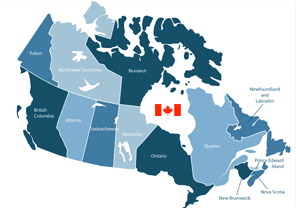By Shelagh, Ross, World Headache Alliance
More patients who visit the doctor complain of headaches than any other single disorder. In fact, the World Health Organization now lists migraine among the world's top 20 of all recognized disorders, with an impact that extends far past the suffering individual, to the family and community. And yet, headache disorders continue to be under diagnosed, misdiagnosed, and mistreated. Although headache is clearly a major significant health burden, the public and many health care professionals see it as a somewhat trivial complaint. As a result, the physical, emotional, social and economic burdens of headache are poorly acknowledged compared with those of other, less prevalent, neurological disorders.
Who is Affected?
It has been estimated that 2.6 million adult Canadian women and just under one million adult men suffer from migraine, but only half are likely to have been adequately diagnosed by a doctor despite excellent access to healthcare and prescription medications. As well, approximately 10% of children and 28% of adolescents have migraine headaches. Although many headache sufferers seek medical attention at some time, many do not return for follow-up medical supervision, choosing instead to self-treat with over-the-counter (OTC) medications and alternative therapies. And many headache sufferers who take OTC pain medication to treat headaches don't realize that over-use can lead to "rebound" headache which can result in addiction to medications, more severe pain when they wear off, and possible serious side effects.
The impact of headache, therefore, is substantial; migraine is considered to be a hidden epidemic. A Canadian survey shows that 92% of migraine sufferers have disability ranging from diminished function to requiring bed rest. Sufferers feel isolated, misunderstood, and often desperate.
The Economic Costs
The greatest costs of headache are often related to “direct costs” - hospital admissions, diagnostic tests, and therapies - while the most important individual “indirect costs” are related to the loss of workdays or reduced time spent working during a workday, due to headache. Approximately three-quarters of migraine sufferers have to temporarily stop normal work activity and many must leave work altogether when they have a migraine. In the U.S. alone, the annual cost of migraine is estimated to be between $5.6 and $17.2 billion in lost work productivity. In Canada the cost of migraine in the workplace is approximately $500 million annually and in Ontario, the average overall annual cost due to migraine is estimated to be $3,025/patient, mostly due to indirect costs.
The Domestic/Emotional Costs
Because migraine is misunderstood, often misdiagnosed and under-treated, family members too can experience confusion, anger and frustration. It has been shown that the majority of migraineurs experience a substantial reduction in their ability to participate in household work and chores. Many report missed family, social and leisure activities, and avoid making plans for fear they will have to cancel due to headaches. Many say they argue with their partners and children because of their migraine and believe they would be better partners if they did not suffer from migraines. Similarly, many partners of migraineurs feel they argue more because of headaches and report other negative effects on their relationships at home.
As well, recurrent headaches impact a child’s life in many ways: school absences and reduced performance, and fewer interactions with family members and friends. Because migraines come with little advance warning, it is difficult to plan for school absences. Children with migraine may spend a lot of time catching up on assignments while at the same time learning new material.
To complicate matters, the addition of depression or anxiety to migraine (common comorbidities of migraine) has a huge impact on healthcare costs. Regardless of the age of the sufferer, co-existing psychiatric disorders markedly increase the cost of treatment for migraineurs. All of this emphasizes the importance of diagnosis and treatment to effectively relieve pain and restore the sufferer’s ability to function.
What Can be Done?
Lack of awareness that headache disorders are real, burdensome, and treatable, is a major problem throughout the world. As a result, a number of initiatives have been developed to raise awareness and support for headache sufferers so they will be encouraged to seek support and get access to up-to-date therapies. These include the establishment of World Headache Awareness Month (WHAM), which is held annually in September, global conventions that involve training and support for governmental agencies, websites that offer informative, up-to-date headache information for sufferers, and representation of headache organizations and experts at international health conferences.
While headache disorders continue to slowly gain recognition as a major health burden, dispelling the myths and overcoming stigma remain key challenges. Headache sufferers, their friends and families must make their voices heard to make sure governments allocate the necessary resources to ensure the availability of newer and more effective treatment options.
“Never doubt that a small group of thoughtful, committed people can change the world. Indeed, it’s the only thing that ever has.” – Margaret Mead
Published on the Help For Headaches Web Site
http://www.headache-help.org

